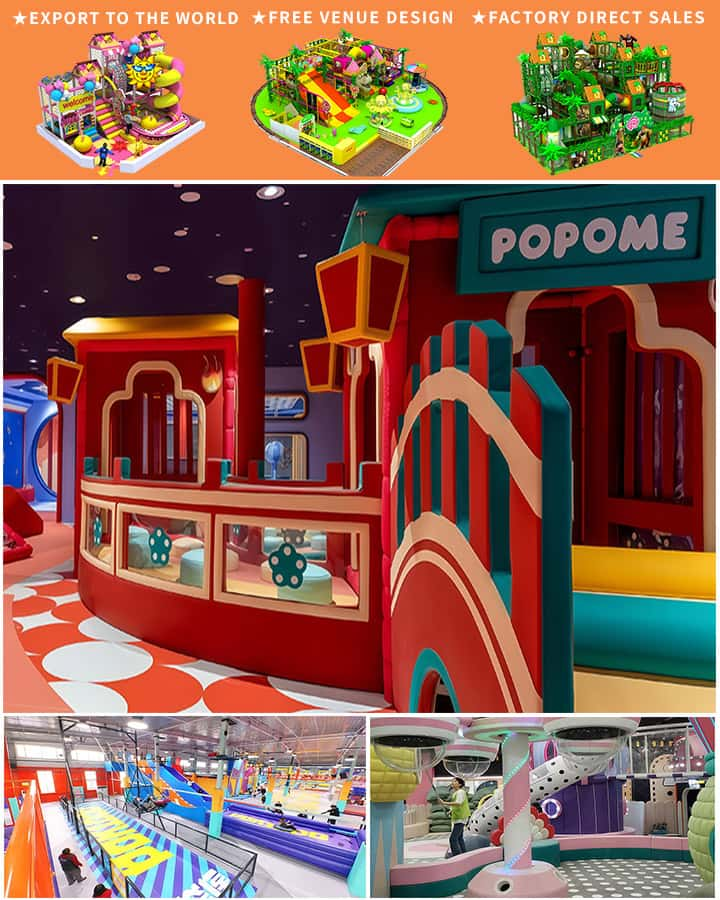In today’s fast-paced world, providing children with a safe and stimulating environment is more important than ever. One of the most effective ways to ensure that kids have fun while staying active and engaged is by incorporating indoor soft play equipment into their daily routine. This guide will explore the various types of children’s indoor soft play equipment and their benefits, offering parents and caregivers valuable insights into creating an ideal indoor playground.
What is Indoor Soft Play Equipment?
Indoor soft play equipment is a broad category encompassing a variety of toys and structures designed for children to play on safely indoors. Unlike traditional playgrounds, which are often outdoors and made from hard materials like metal and wood, indoor soft play equipment is typically constructed from foam, fabric, and plastic to ensure a cushioned, impact-absorbent experience. The primary goal of this equipment is to provide a space where children can climb, slide, bounce, and explore without the risk of serious injury.
Benefits of Indoor Soft Play Equipment
Safety First: One of the most significant advantages of indoor soft play equipment is its safety. The materials used are soft and padded, reducing the risk of injuries from falls or collisions.
Physical Development: Such equipment encourages physical activity, helping children develop motor skills, balance, coordination, and strength.
Social Interaction: Indoor play areas foster social interaction, allowing children to engage with peers, learn teamwork, and develop communication skills.
Cognitive Growth: Many pieces of soft play equipment stimulate imagination and creativity, encouraging problem-solving and critical thinking.
Weather Independent: Indoor soft play setups offer a fantastic alternative to outdoor play, ensuring that children can stay active regardless of weather conditions.

Types of Indoor Soft Play Equipment
Climbing Structures
Climbing frames, whether simple or complex, are staples in many indoor soft play centers. They come in various shapes and sizes, catering to different age groups and skill levels. These structures help improve children’s muscle tone and coordination while offering a fun challenge.
Slides
Slides are always a hit among children. From gentle inclines for toddlers to steeper slides for older kids, these attractions add an exciting element to indoor play areas. Some slides are standalone, while others are integrated into larger climbing structures.
Ball Pools
A ball pool provides endless hours of entertainment. Filled with colorful plastic balls, they are perfect for sensory stimulation and physical activity. Ball pits can be combined with other elements like slides and obstacles for added excitement.
Trampolines
Trampolines are excellent for developing balance and coordination. Indoor trampolines are designed with safety nets and padded edges to prevent accidents, making them a popular choice for active play.
Obstacle Courses
Obstacle courses challenge children’s agility and problem-solving abilities. These courses often combine elements like tunnels, bridges, and balancing beams, providing a comprehensive workout for young minds and bodies.
Sensory Toys
Sensory toys such as textured mats, light-up toys, and musical instruments engage children’s senses and promote cognitive development. These are particularly beneficial for young children who are still exploring the world around them.
Designing Your Own Indoor Play Space
Creating an indoor soft play area at home can be a rewarding project. Here are some tips to get you started:
Plan the Space: Assess the available space and think about the types of activities your child enjoys. Consider a mix of climbing structures, slides, and interactive elements.
Safety First: Ensure all equipment is age-appropriate and meets safety standards. Look for non-toxic materials and sturdy construction.
Customize: Personalize the space with your child’s favorite colors and themes to make it more inviting.
Modular Options: Invest in modular equipment that can be rearranged or expanded as your child grows. This ensures longevity and continued engagement.
Maintenance: Regularly clean and inspect the equipment to keep it in good condition and ensure ongoing safety.
Conclusion
Children’s indoor soft play equipment offers a fantastic way to combine fun and development in a safe, controlled environment. Whether through climbing structures, slides, ball pools, or trampolines, indoor play areas can provide countless hours of enjoyment while supporting physical and cognitive growth. By carefully selecting and maintaining the right equipment, parents and caregivers can create an ultimate indoor playground that keeps children happy and healthy year-round




